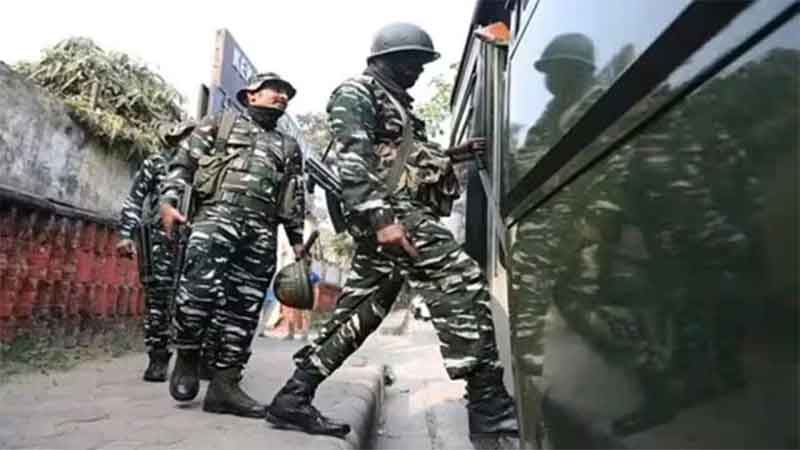
More than 100 people’s organisations, environmental groups and over 300 citizens have appealed to the President to withdraw paramilitary forces deployed for 11000 mw hydropower dam surveys in Siang valley of Arunachal; raise threat of climate disasters & loss of biodiverse indigenous habitats
Over 351 concerned citizens – activists, researchers, lawyers, scientists, journalists, experts, community representatives and 109 people’s organisations and environmental groups from across the country and especially the states of the Himalayan region have sent an urgent appeal to the President demanding withdrawal of paramilitary troops in the Siang valley in Arunachal Pradesh. The deployment that is meant to ”facilitate“ a pre-feasibility survey for the 11000 MW (11 Gigawatt) Siang Upper Valley Multipurpose Project (SUMP) has met with peaceful protests in villages of the valley in the past week. Expressing solidarity with the indigenous populations of the region, the submission to the President draws attention to the fact that this will be India’s largest hydropower projects and has been a raging controversy in the state for years given the opposition of the local Adi tribe inhabiting one of India’s most important Himalayan biodiversity hotspots.
“We stand in complete solidarity with the Siang Indigenous Farmers Forum (SIFF) that has been making submissions to the government and carrying out peaceful and democratic protests against the construction of the mega hydropower dam. It is disturbing that the state and central government has turned around on its own promise made a few months ago that no activity of the project shall be initiated without the consent of the people.”
The letter goes on to highlight recent evidence of the hazardous nature of these hydropower dams in the Himalayan region. “In the past few years many parts of the Western Himalaya have seen an unprecedented rise in the frequency and intensity of climatic events like floods, glacial lake bursts, cloud bursts, landslides, sinking land and avalanches. The 2013 Uttarakhand floods led to deaths of over 5000 people officially and damage to multiple hydro projects. In 2021 an avalanche in Chamoli caused catastrophic floods that destroyed hydropower infrastructure and claimed over 200 lives. In 2023, the Teesta III Dam was destroyed by a Glacial lake outburst in Sikkim. And this year in Himachal Pradesh the Malana Dam burst as it was hit by a sudden flood from upstream.”
“In all these events not just hydropower infrastructure worth hundreds of crores was completely destroyed, even public infrastructures and private properties including houses, farms and fields that are downstream of the dam got swept away. The flood and landslides related casualties are also on the rise in the Himalayan region in the past few years. These events are increasing the disaster potential of the region, as also shown by numerous scientific studies. A recent study titled ‘Landslide Hazard Is Projected to Increase Across High Mountain Asia,’ was conducted by Nasa’s Goddard Space Flight Centre and projects over 30% increase in landslide hazards by the end of the century compared to baseline levels recorded between 1990 and 2014. The areas around and downstream of dams are the most vulnerable to these landslides and subsidence due to slope destabilisation by blasting and excavation. The people of the Siang Valley are well aware of the sensitivity of their landscape, the rapidly changing unpredictable climatic conditions and the possible hazards associated with such massive constructions in this topography. Further, there is a serious need for India to review its hydropower plans in the Himalaya as river discharges reduce leading to a drop in the hydropower generation for a large part of the year. Entities like the NHPC have repeatedly failed in the timely commissioning of mega projects due to the above said challenges, not doing necessary geological risk assessment or disaster potential assessment and have been running losses which is a huge dent in the public exchequer. This is also exemplified in what is happening at the under construction 2000 MW Subansiri Lower Hydropower Project on Assam Arunachal Pradesh border .”
“One of the reasons that the people have been opposing the initial surveys is because once a survey of such a large scale project is underway it compromises the stance of the local people as project proponents cite investments in surveys as an excuse for approvals. India is a signatory to conventions and climate treaties that pledge to protect not just rights of the indigenous people and their livelihoods but also the biodiversity and ecosystems that they depend on for survival and which play the role of maintaining ecological balance. The Siang district in Arunachal Pradesh is known for its rich biodiversity, particularly within the Dihang-Dibang Biosphere Reserve which spans across West Siang, Upper Siang, and Dibang Valley, making it one of the most biodiverse areas in the state with a wide variety of flora and fauna, including many endemic species; this region is considered a “Biodiversity Hotspot” globally. The U.N. Declaration on the Rights of Indigenous Peoples to which India is a signatory gives Indigenous people the right to give or withhold consent on any activities impacting their lands, resources, livelihoods and health. The SIFF had filed a case in the High Court challenging the Siang Ultra Mega Power Plant and in September 2022 the Arunachal Pradesh High Court also directed that the consent of the people be upheld. Initiating any surveys without the consent of the local village councils is also a violation of constitutional statutes especially Section 5 of the Scheduled Tribes and Other Traditional Forest Dwellers (Recognition of Forest Rights) Act 2006.”
Subscribe to Our Newsletter
Get the latest CounterCurrents updates delivered straight to your inbox.
The letter demands that the trust and faith of the local indigenous population in the constitutional democracy be maintained through use of democratic consultations and processes of free prior informed consent of the gram sabhas rather than threat, force and intimidation.
Issued by: People for Himalaya & Youth For Himalaya









































